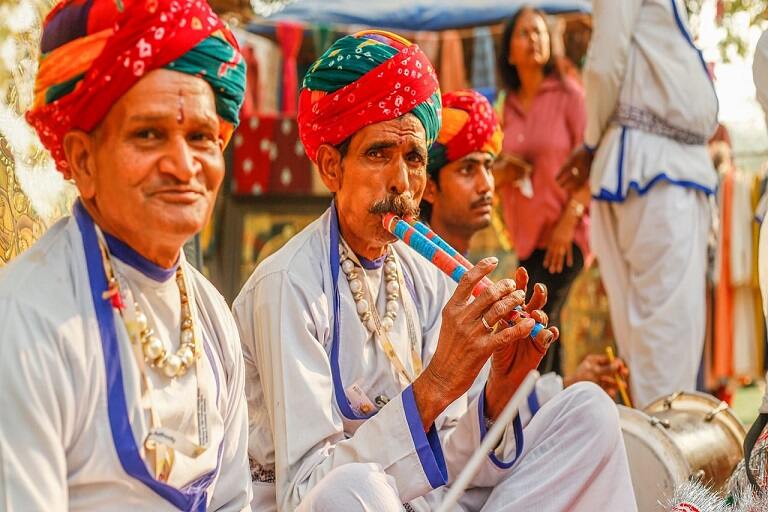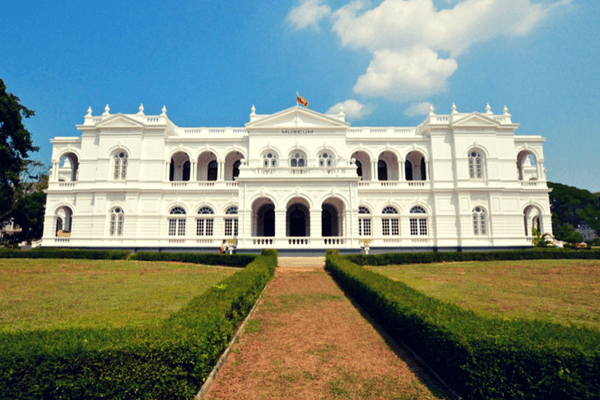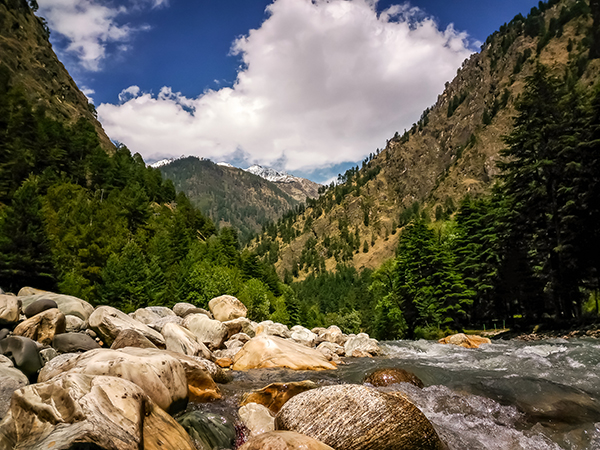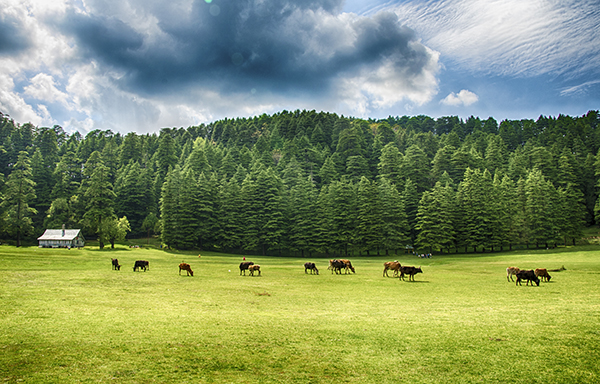
Top 5 Things About Local Art and Culture of Rajasthan
Table of contents
Rajasthan is a culturally rich and visually stunning Indian state. It is renowned for its artistic traditions and exquisite craftsmanship. This is unsurprising, as the state is home to colourful festivals, magnificent palaces, vibrant markets, and sprightly outfits. These all showcase the true essence of the region.
The art and craft of Rajasthan is truly breathtaking and deserves all the attention it gets. In this article, we will explore five fascinating aspects of the local art and culture of Rajasthan.
Want to experience the rich culture and traditions of Rajasthan firsthand? Book a tour with Thomas Cook today! Our Rajasthan tour packages are designed to give you an immersive experience of the region’s unique culture and heritage. You won’t be disappointed!
1. Famous Handicrafts of Rajasthan

From intricate textiles to intricately carved wooden artefacts, the handicrafts of Rajasthan bring the artistic prowess of its artisans.
One of the most famous handicrafts of Rajasthan is the art of Bandhani, a tie-and-dye technique used to create vibrant patterns on fabrics. The intricate process involves tying small portions of the fabric with thread and then dyeing it in various colours to create beautiful designs. These Bandhani fabrics make sarees, dupattas, turbans, and other traditional attire.
Another remarkable craft of Rajasthan is the art of block printing, where skilled artisans meticulously carve intricate designs onto wooden blocks. These blocks are then dipped in natural dyes and stamped onto fabrics, resulting in stunning patterns. Jaipur, the capital city of Rajasthan, is particularly renowned for its block printing industry.
Rajasthan is also famous for its magnificent handcrafted jewellery. The artisans skillfully create exquisite pieces using silver, gold, precious, and semi-precious gemstones. Kundan and Meenakari are two popular jewellery-making techniques that originated in Rajasthan. Kundan jewellery features elaborate settings of gemstones, while Meenakari involves enamelling colourful designs on metal surfaces.
Wooden handicrafts are another highlight of Rajasthan’s artistic heritage. Skilled artisans carve intricate designs on furniture, doors, and decorative items using traditional techniques. The beautifully carved wooden artefacts, known for their intricate detailing and vibrant colours, add a touch of elegance to any space.
2. Architecture of Rajasthan

From grand forts and opulent palaces to intricately designed havelis (mansions) and awe-inspiring temples, Rajasthan’s architectural wonders are a sight to behold.
Amer Fort, which represents the affluent yet humble culture of Rajasthan is built majestically with red sandstone, mind-boggling mirror work, and marble, showcasing a seamless fusion of Rajput and Mughal architectural styles. Similarly, the havelis of Shekhawati boast grand mansions, adorned with vibrant frescoes depicting mythological scenes, historical events, and intricate patterns, reflecting the richness and artistic finesse of the region’s merchant families.
The Lake Palace, situated on the picturesque Lake Pichola of Udaipur, referred to as the Venice of the East, is a masterpiece of white marble architecture. Floating like a mirage on the tranquil waters, it exudes an air of romance and charm. The City Palace of Udaipur, with its ornate balconies, beautiful courtyards, and impressive collection of artefacts, offers a glimpse into the royal lifestyle of the Mewar dynasty.
Jaisalmer, the golden city of Rajasthan, is famous for its stunning sandstone architecture. The Jaisalmer Fort, also known as the Sonar Qila or Golden Fort is a UNESCO World Heritage Site. The intricate latticework, ornate Jain temples, and narrow winding streets within the fort walls create a mesmerizing ambience.
Each structure, whether a fort, palace, haveli, or temple, tells a unique story, transporting visitors to an era of splendour and regal magnificence.
3. The Folk Music and Dance Culture of Rajasthan
If you have been on a Rajasthan trip, you must have noticed that the state’s rich heritage is beautifully reflected in its traditional music and dance forms, passed down through generations.
Rajasthani folk music is characterized by soulful melodies, rhythmic beats, and expressive lyrics that often depict tales of love, valour, and devotion. One of the most popular musical instruments used in Rajasthani folk music is the ‘Ravanahatha,’ a string instrument believed to be one of the oldest in the world. The terrific tunes produced by the Ravanahatha, along with instruments like the dholak, sarangi, and morchang, create an enchanting atmosphere during performances.
The folk dances of Rajasthan are a visual treat, capturing the essence of the region’s vibrant culture and traditions. The graceful movements, colourful attire, and lively footwork of dancers’ transport spectators to a world of celebration and joy. The ‘Ghoomar’ dance, performed by women in swirling ghagras (long skirts), is one of the most famous dance forms in Rajasthan. The ‘Kalbelia’ dance, performed by the Kalbelia community, is a mesmerizing display of agility and grace, accompanied by the soul-stirring tunes of the ‘pungi’ (a traditional wind instrument).
Other popular folk dances include the ‘Chari’ dance, performed with pots on the head, and the ‘Bhavai’ dance, where performers balance several pots on their heads while executing intricate movements. These dances not only entertain but also serve as a means of storytelling, preserving the cultural heritage of Rajasthan. Whether it is the energetic rhythms of the ‘dhol’ or the soulful melodies of the ‘manganiyars,’ Rajasthan’s folk music and dance provide a window into its traditions, rituals, and celebrations.
4. Food Culture of Rajasthan

Rajasthan’s art and culture can never be complete without mentioning its scrumptious cuisines with robust flavours, including Daal Baati, Pyaaz Kachauri, Laal Maas, and Mirchi Bada.
Dal Bati Churma, one of the most traditional Rajasthani dishes, consists of flaky round bread called Bati, served with lentil curry (Dal) and a sweet crumbly mixture of wheat, sugar, and ghee known as Churma. You are going to love it! Laal Maas, a fiery meat curry, is another speciality of Rajasthan made with succulent pieces of mutton or lamb cooked with a medley of spices, including red chillies, garlic, and yogurt. The dish derives its name from the vibrant red colour of the chilli peppers.
Another famous dish is Gatte ki Sabzi, made with gram flour (besan) dumplings cooked in a spicy yogurt-based curry. The dish is often paired with Bajra Roti (millet bread) or steamed rice, offering a wholesome and flavorful meal. We recommend you try this lip-smacking Rajasthani dish when you book your package with Rajasthan Tourism!
Rajasthan is also famous for its snacks and street food. Pyaaz Kachori, a deep-fried pastry filled with spiced onion mixture, and Mirchi Bada, a spicy chilli pepper fritter, are popular choices. The state is also known for its sweet delicacies like Ghevar, a honeycomb-shaped dessert made with flour, ghee, and sugar syrup. The syrup-soaked Malpua and Jalebi to the rich and creamy delights like Rabri are some more sweet treats of Rajasthan, and they are truly indulgent!
From the rich and hearty flavours to the indulgent sweets, exploring the cuisine of Rajasthan is a gastronomic adventure that genuinely satisfies the senses.
5. Traditional Dresses and Language of Rajasthan
The attire of the people of Rajasthan reflects the vibrant colours, intricate embroidery, and rich heritage of the region, while the language spoken adds to the cultural tapestry.
The traditional dress for women in Rajasthan is the Ghagra-Choli or Lehenga-Choli. The Ghagra is a long, flared skirt, often adorned with mirror work, sequins, and embroidery, while the Choli is a fitted blouse. The outfit is completed with a colourful Odhni (dupatta) draped elegantly over the shoulders. Men traditionally wear the Dhoti-Kurta, which consists of a loose shirt (Kurta) paired with a wrapped garment (Dhoti) worn as lower attire.
Rajasthan is also known for its stunning textiles and embroidery. The colourful Bandhani and Leheriya prints are popular in traditional attire, reflecting the vibrant Rajasthani culture. Intricate mirror work, known as Abhla Bharat, and colourful appliqué work are also prominent features.
Rajasthani is derived from the Western Indo-Aryan language family and is rich in vocabulary and expressions reflecting local culture and traditions.
The language predominantly spoken in Rajasthan is Rajasthani, which has several dialects. Marwari, Mewari, Dhundhari, and Shekhawati are major regional dialects. The traditional dresses and language of Rajasthan serve as a window into the cultural heritage and diversity of the region. They showcase the artistic craftsmanship, vibrant colours, and linguistic nuances that make Rajasthan a captivating land with a unique identity.
Wrap Up
Rajasthan culture and tradition have woven centuries of artistic brilliance and poetic finesse and served it in intricate handicrafts, soul-stirring folk music and dance, architectural marvels, and more. So, book your Thomas Cook’s special Rajasthan Tour Packages today and experience the blend of a beautiful local culture with a welcoming spirit.
Table of contents
Trending blogs for you
 18002099100
18002099100



















